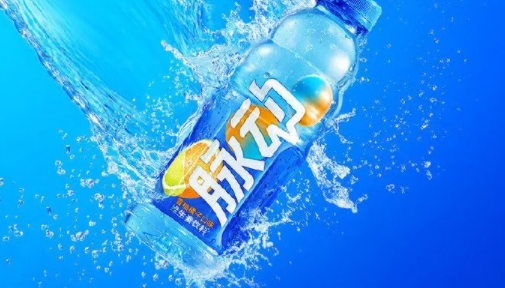What Chinese cars fear most when going global is not technology, but patents?
2025-11-06 | 发布于:赛立信
Leading the way: an early morning push
On June 3rd at 00:47 local time, a pop-up window appeared in German Automotive Weekly: A German parts giant has sued two Chinese new energy vehicle companies in the UK and France, accusing their electric drive systems of infringing on IGBT inverter patents, claiming 440 million euros and applying for a temporary sales ban.
In just ten hours, ChineseEVPatent made it to the hot search on Twitter, with its stock price fluctuating by 7%.
Comment section high like message:
“Chinesecarsarefast,butpatentsarefaster.”
Our just completed 2025 China Automotive Overseas Patent Risk Perception Survey shows that:
68% of domestic respondents believe that being sued for patent infringement overseas is equivalent to technical plagiarism;
Only 22% have heard of the concept of "patent layout";
More than half of the public simply equate the "foreign patent war" with "poor quality".
One sentence: Once the technology is mastered, the cognitive level becomes even more difficult.
1、 How high is the 'patent wall' for going abroad? ——Understand three pictures
Overseas valid patents in the field (number of items) Average potential patent fee per vehicle (in US dollars) of Chinese car companies
IGBT inverter 12300 8% 220
Lidar 4150 12% 135
Solid state battery 2890 7% 95
Based on an estimated export of 1.8 million vehicles by 2025, these three core components alone may contribute $450 million in patent costs - nearly 18% of the average net profit of the entire vehicle.
2、 Classic 'Crash' Scene: A Lawsuit, Half a Year of White Work in Europe
Case replay: September 2023 to May 2024
Plaintiff: A certain European giant
Defendant: Chinese car company A (exporting 18000 vehicles per year)
Controversy: Patent for Battery Thermal Management Threshold
Progress: Temporary ban → Customs seizure of 3600 units → Settlement → Compensation of 27 million US dollars
Side effects: Sister models on the same platform are delayed for 6 months, resulting in a direct loss of $410 million in orders
Key episode: On the day of the ban, mainstream European radio stations quoted a netizen's vote - "Are Chinese car companies plagiarizing
73% of the audience voted yes, simply because 'being sued is likely to be wrong'.
The technical dispute instantly escalated into a brand crisis.
3、 The 'blind box' of public perception - how do we measure it?
1 sample
Domestic first to fourth tier cities N=1200
Germany, France, and Western Europe N=600 (online questionnaire+street survey)
Two double-blind experiments
Ask the interviewee to read two fake news articles simultaneously:
Title: Chinese car company sued for patent infringement in Europe
Title B: Chinese car companies face technical lawsuits in Europe
(The content is completely identical)
3 Results
68% of people directly associate the word 'infringement' with 'plagiarism';
Only 29% think there is a mistake when they see 'technical litigation';
Further questioning on whether the patent layout is known, the bilingual samples in both Chinese and English are less than 25%.
Conclusion: Language labels influence moral judgments, while technical facts give way to emotional semantics.
4、 Are judges and juries also confused? ——International Court Proceedings
United States (East Texas)
Case: Patent for electric drive system
10 jurors, 9 of whom have no engineering background
The lawyer used a 40 page PPT to explain the phase difference of modulated waveforms, and in the 12th minute, three people had already dozed off
Final verdict: Defendant to compensate $156 million
After the fact interview: Jurors admitted, 'I didn't fully understand, but I feel like the plaintiff is working harder.'
Germany (Munich)
Case: Vehicle mounted LiDAR
The court appoints technical judges and independent experts
Expert report 180 pages, verbal explanation for 3 hours
The verdict overturned the preliminary injunction on the grounds that the interpretation of the claims was too broad
The media still headlines the party: 'China's radar stealing technology released'
The more complex the technology, the more the judgment relies on 'narrative ability' rather than the technical truth itself.
5、 Translating 'complex' into 'story': Three tips to reduce cognitive load
Tip 1: One sentence technical positioning
IGBT is like the 'faucet' of an electric drive system, determining how much power flows to the motor. ”
——Comparing electronic drift to water flow, the judge has a 5-second Get function role.
Tip 2: A comparative flowchart
Left: Plaintiff's Patent Steps 1 → 2 → 3
Right side: Defendant's technical steps A → B → C
Mark the "differences" with the same color block, so that the judge can see the "differences" first, and then listen to the lawyer explain "why they are different".
Tip 3: Consumers quickly adjust to be the "third eye"
Complete a street survey of 200 people within 48 hours
Question: After watching the technical animations of both parties, do you think they are "similar" or "dissimilar"?
Result: 71% believe 'not like' → submitted directly as' public perception 'evidence
Effect: The German court first cited consumer rapid response reports as a reference for "technological similarity" in its judgment in October 2024.
6、 Progress report of Chinese car companies' 'patent arsenal'
Year: Winning rate of core litigation for overseas patents (cases), size of patent operation fund
2020 3100, 22%, 500 million yuan
2023 9800 41% 3 billion yuan
2025E 16, 000 50%+7 billion yuan
The number has doubled, the winning rate has increased, but there is still a gap from the "offensive defensive balance".
7、 A "Overseas Patent Battle Map" for Car Companies and Legal Affairs
① Lead layout: Complete the dual map of "target country+rival technology" 18 months before listing
Using AI semantic retrieval to capture 50000 similar patents
Generate a 'heatmap', where the red area represents high-risk dense areas
Design three solutions in advance: "bypass+substitution+acquisition"
② Story Preview: Telling Technology to 'Outsiders'
Establish an internal "visualization team" consisting of engineers, animators, and patent lawyers
All technical disclosures must be clearly explained within 10 slides and 150 words
Regularly invite non-technical employees to simulate a 'jury' and return to work if they don't understand
③ Public opinion hedging: cognitive research for "notarization in court"
Initiate consumer flash mob investigation 48 hours prior to litigation
Output a dual axis report on "technical similarity vs public misidentification rate"
Used to refute the stereotype of "infringement=plagiarism" and reduce public opinion pressure
④ Counter claim strategy: Exchange "patent portfolio" for "market time"
Defend against the other party's other patents and strive for cross licensing
Case in 2024: Successful counterclaim by Chinese enterprise, cutting compensation by 60% and obtaining 3-year exemption from patent fees
8、 Future: Patent war is just a "appetizer", standard war is the "main course"
Quantum communication, automotive grade Chiplets, 800V silicon carbide - standards not yet unified
Whoever first writes into international standards can make their opponents "actively infringe"
Cognitive warfare synchronous upgrade: The voice of 'Chinese standards=global standards' needs to be seen, understood, and accepted
Conclusion
Chinese cars are going global, and the engine has already been ignited, but the 'patent wall' is the hidden track. Technological leadership does not necessarily mean market leadership. Only when patent layout, narrative ability, and public awareness are integrated can the "innovation advantage" be truly transformed into a "market victory".
Final interaction——
What do you think is the most effective weapon to deal with overseas patent wars?
A. More powerful technology
B. More comprehensive patent layout
C. Consumers with a better understanding of the law
See you in the comments section, perhaps your answer is the key to winning the next game!
Research on Foreign Related Patents and Chinese Automotive Overseas Patents


